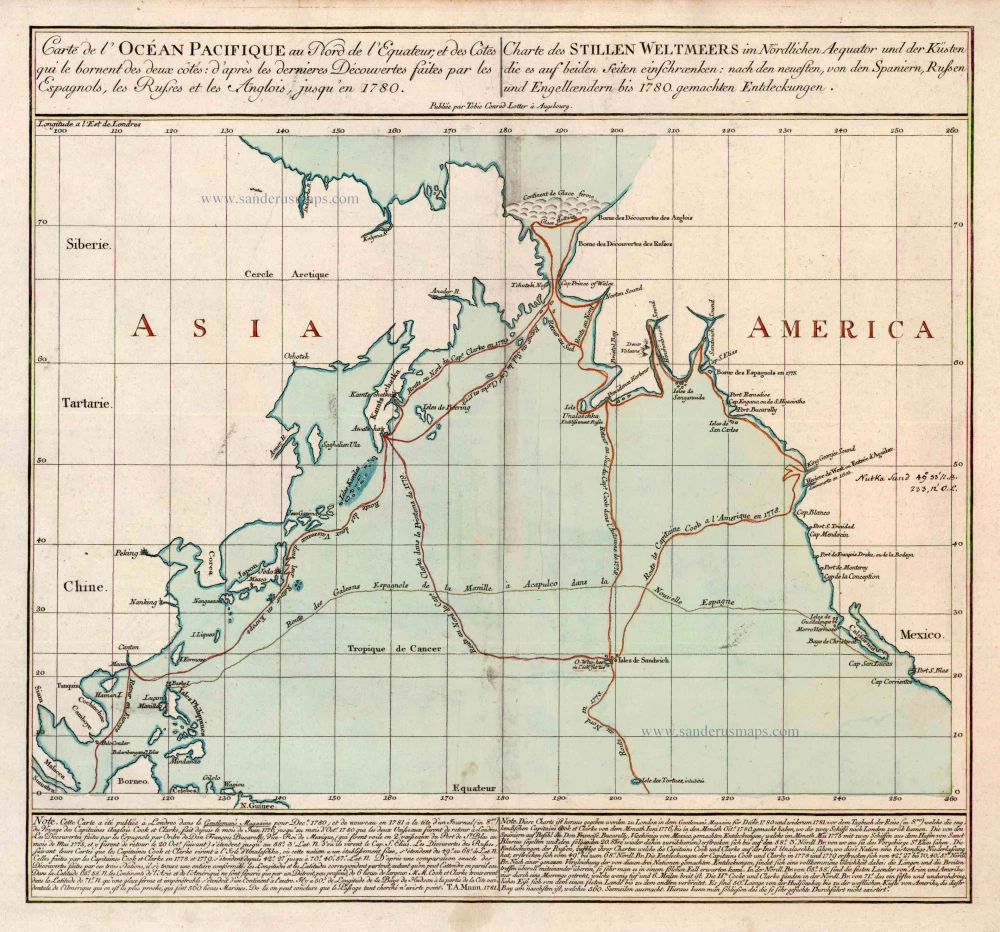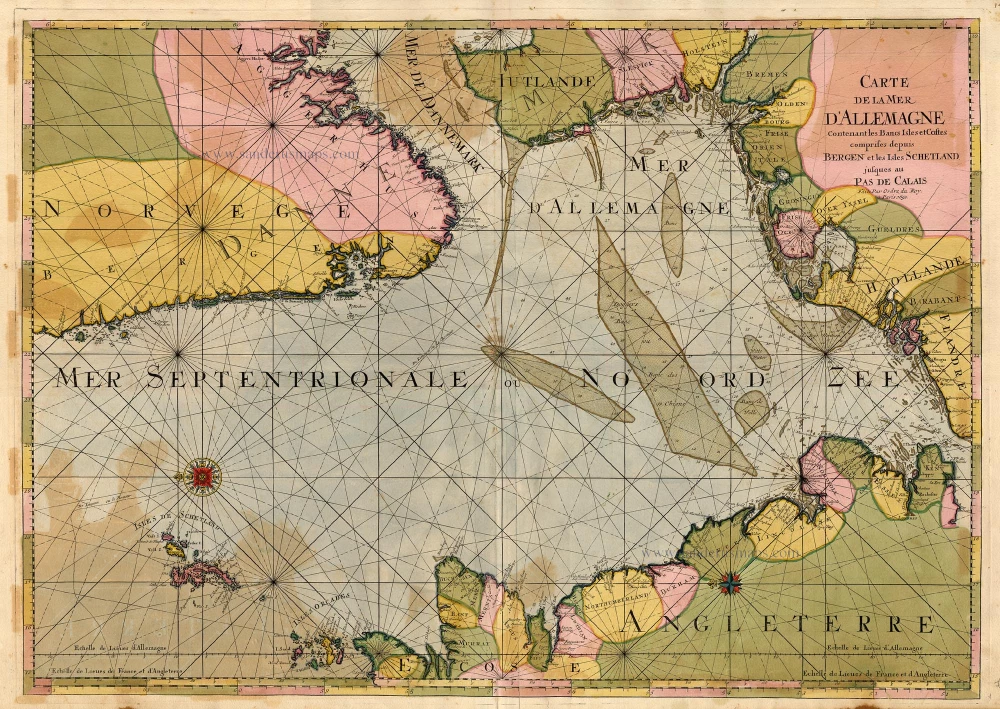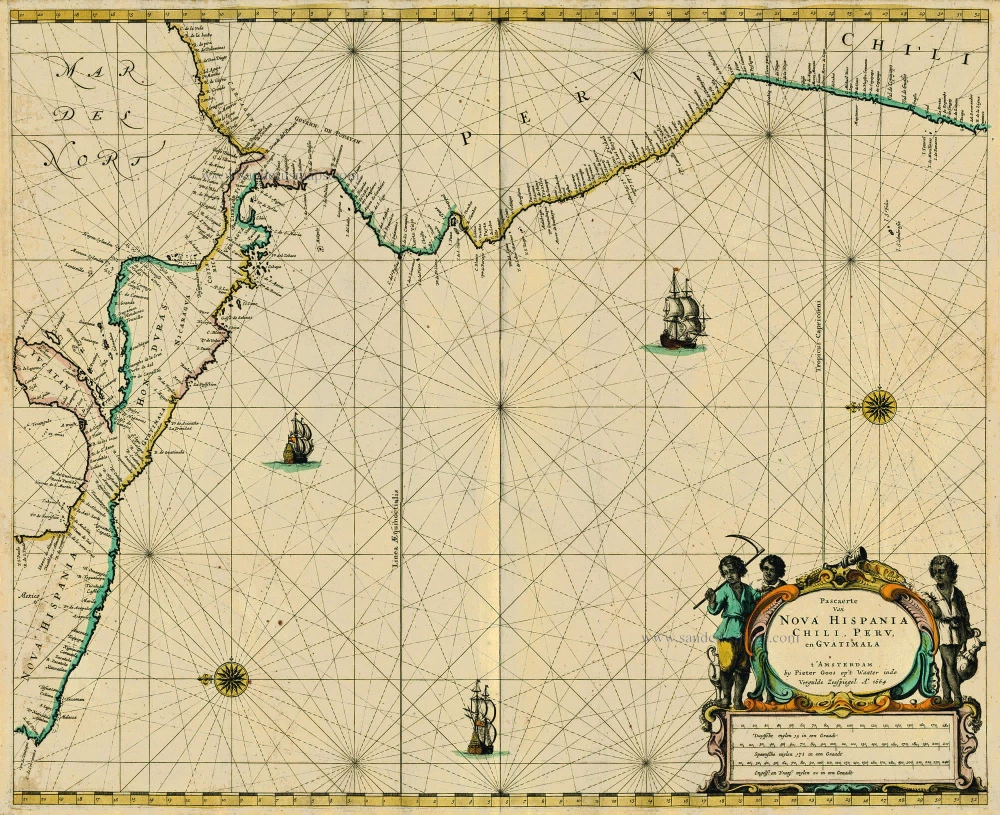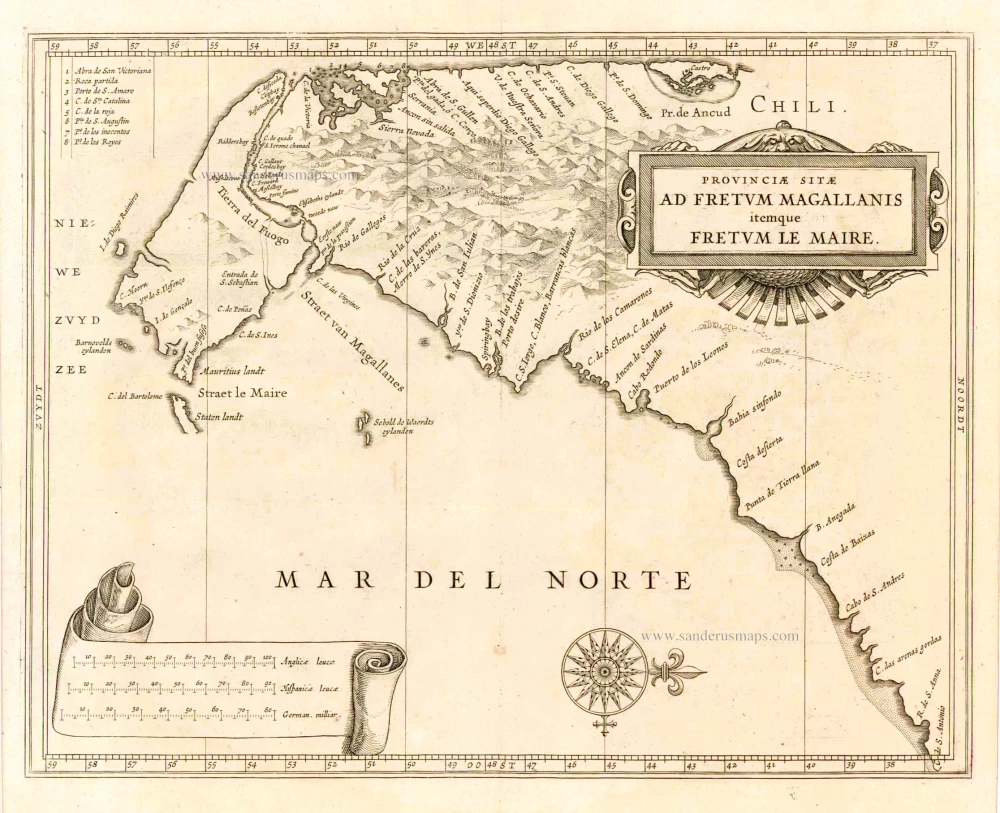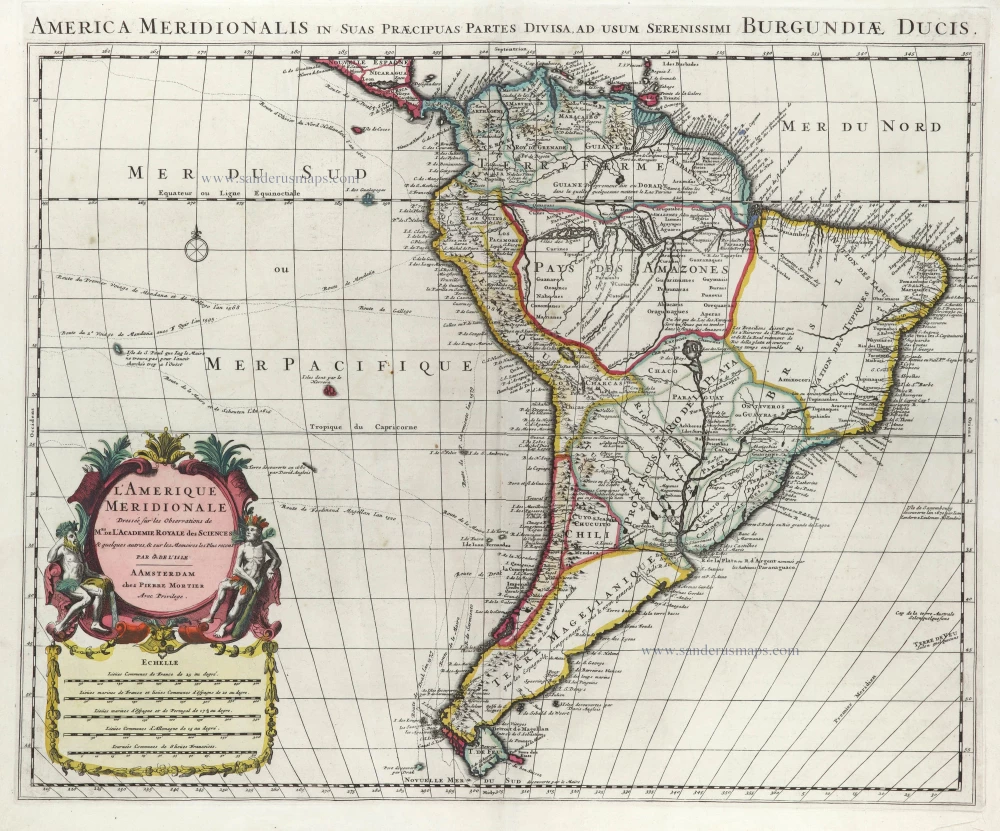Rare chart showing the route taken by Schouten and le Maire from South America to New Guinea, by Michiel Colijn. 1622
Caerte van de zeylage van Jacob le Maire over de Zuydzee, vertonende de Eylanden ende Landen aldaer by hem ghesien ende aenghedaen. / Tabula, ductum navigationis, quem in Mari Australi tenuit Iacobus Le Maire ...
Item Number: 25104 Authenticity Guarantee
Category: Antique maps > Australia
Old, antique map - very rare chart published by Michiel Colijn showing the route taken by Schouten and le Maire from South America to New Guinea.
Title in Dutch, Latin and French.
Copper engraving, printed on two sheets, joined.
Size: 22 x 53cm (8.6 x 20.7 inches)
Verso: Blank
Condition: Light brown stain at bottom right.
Condition Rating: A
References: Schilder 7, p.302.
From: Spieghel der Australische Navigatie. Door den Wijt vermaerden ende cloeckmoedighen Zee-heldt Iacob Le Maire, President ende Overste over de twee Schepen, d'Eendracht end Hoorn / uytghevaren den 14. Junij 1615. Amsterdam, Michiel Colijn, 1622.
The expedition undertaken by Schouten and Le Maire was equipped in 1615 by Le Maire's father for the Australische Compagnie. This company attempted to circumvent the VOC patent by finding another route to Indonesia. Schouten and Le Maire succeeded in their quest by sailing around Vuurland instead of through the Magellan Straits. But despite their discovery of a new route, their expedition was not very successful. When they arrived in Batavia, their story was not believed and their remaining vessel, the Eendracht, was confiscated along with its cargo.



